Acquisitions of prestigious quality
Author:
Don Duco
Original Title:
Aanwinsten met prestigieuze status
Publication Year:
2005
Publisher:
Pijpenkabinet Foundation
Journal:
Nieuwsbrief Pijpenkabinet
Description:
A cassette with four Dunhill tobacco pipes and a handmade silver kiseru discussed as acquisitions for the Pijpenkabinet museum.
Dunhill cassette
Without any doubt, Alfred Dunhill of London is the most famous name in briar pipes. From the beginning of the 20th century, the Dunhill pipe is regarded as the Rolls Royce in tobacco pipes. The older specimens are highly collectible these days, especially in America. From a private source we were able to acquire a box with four tobacco pipes, both the pipes and the box in perfect condition. These fitted boxes are known with two, three, four and even with six or twelve pipes! Our four pipes are of the same shape, but slightly different in size. For the real amateur they are numbered as follows: 252F/T, 250F/T, 60F/T, 60F/T. The year letter 3 refers to the year of production 1953.
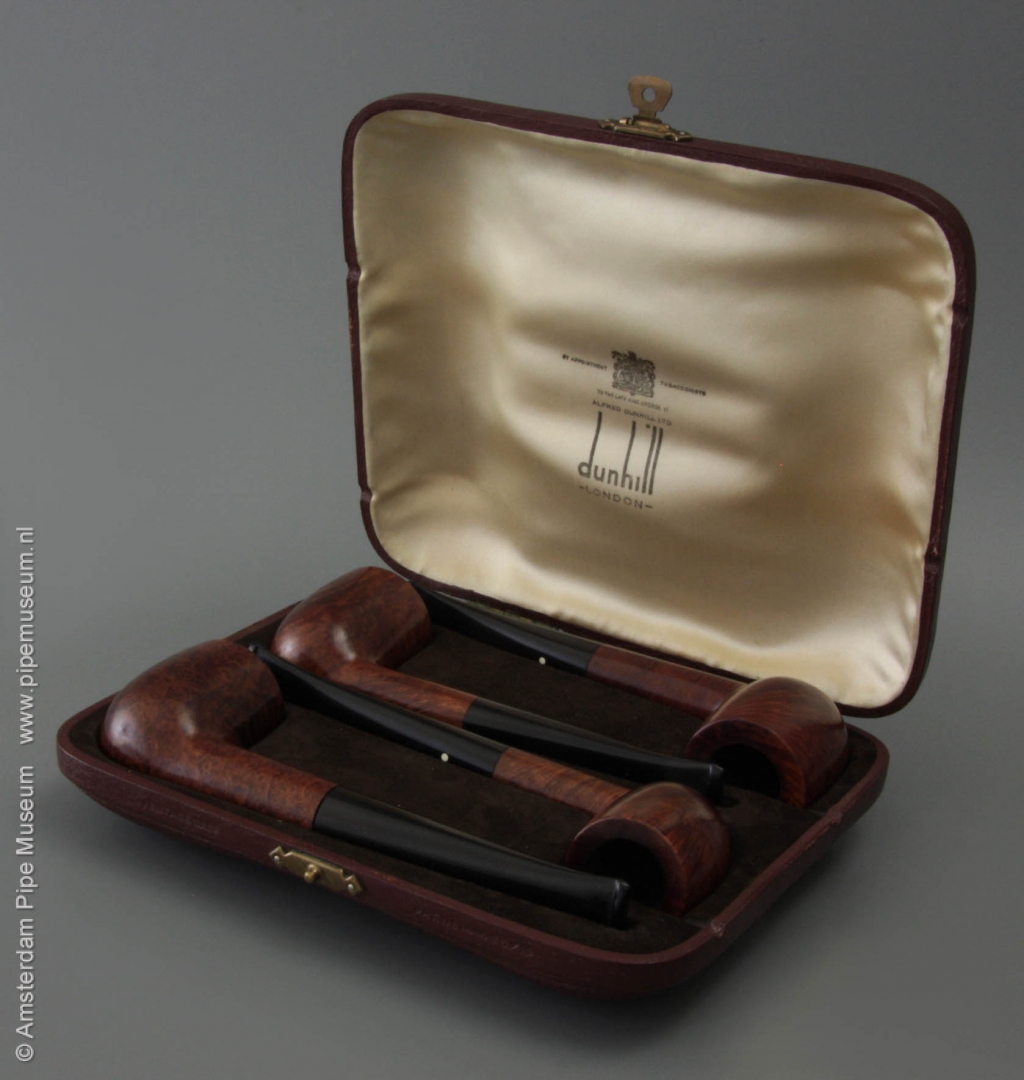
In the lid, lined in white silk, a golden crown and text is printed: "BY APPOINTMENT TOBACCONISTS TO THE LATE KING GEORGE VI, ALFRED DUNHILL LTD, DUNHILL LONDON". The mention of “the late king George” indicates that the box was sold just between the death of George VI and the coronation of his daughter Queen Elisabeth II, so in the summer or early autumn of 1953.
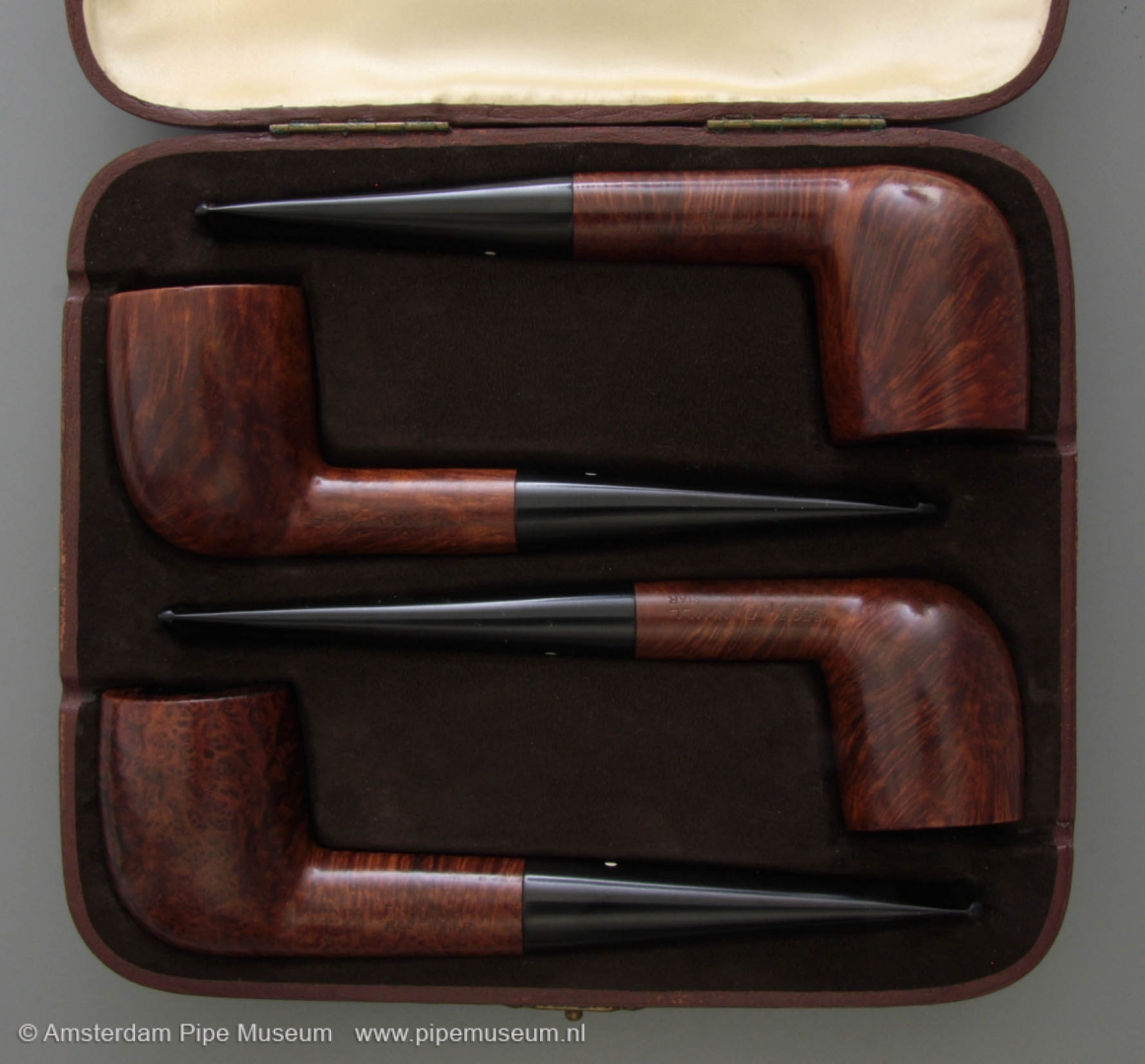
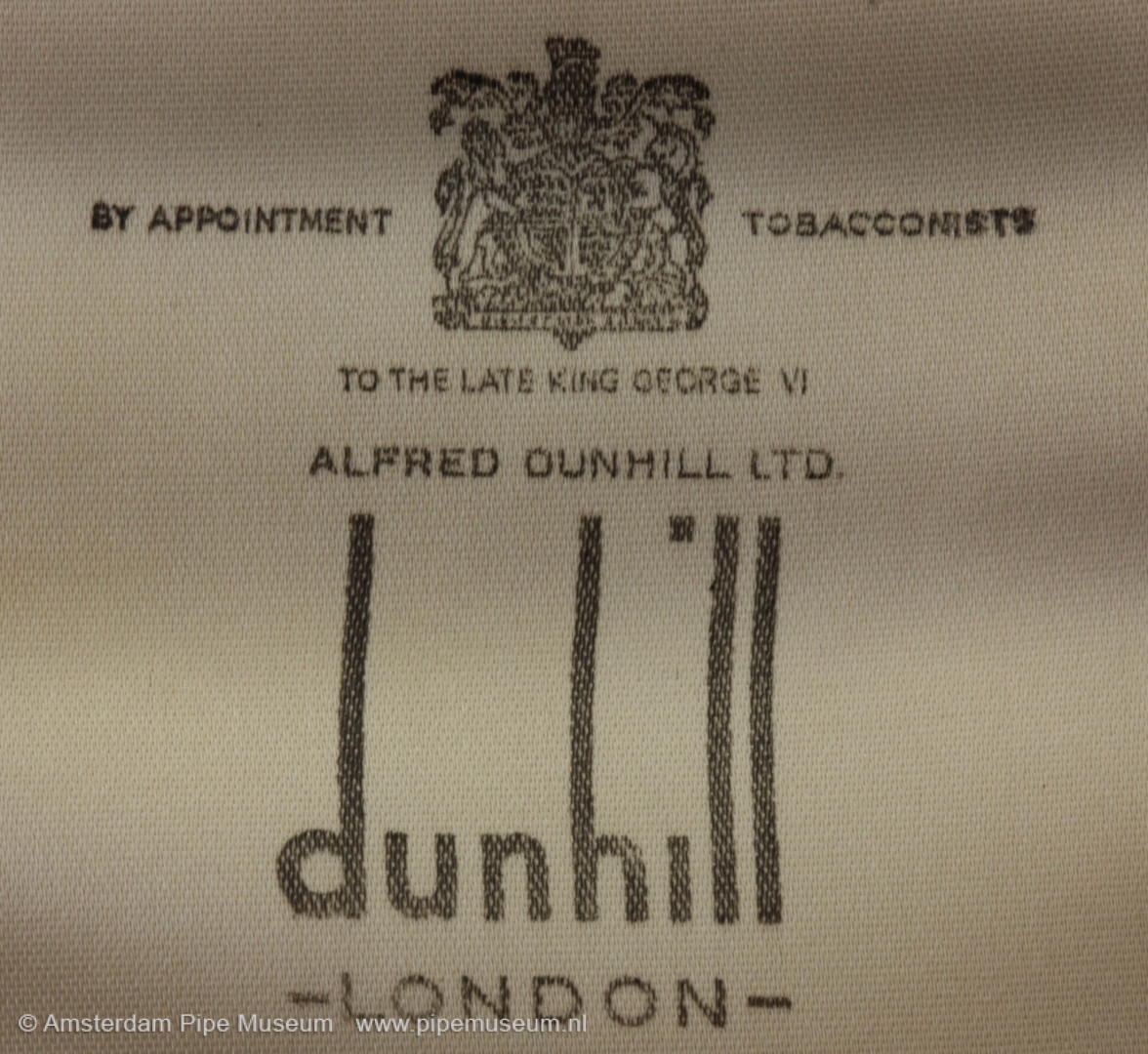
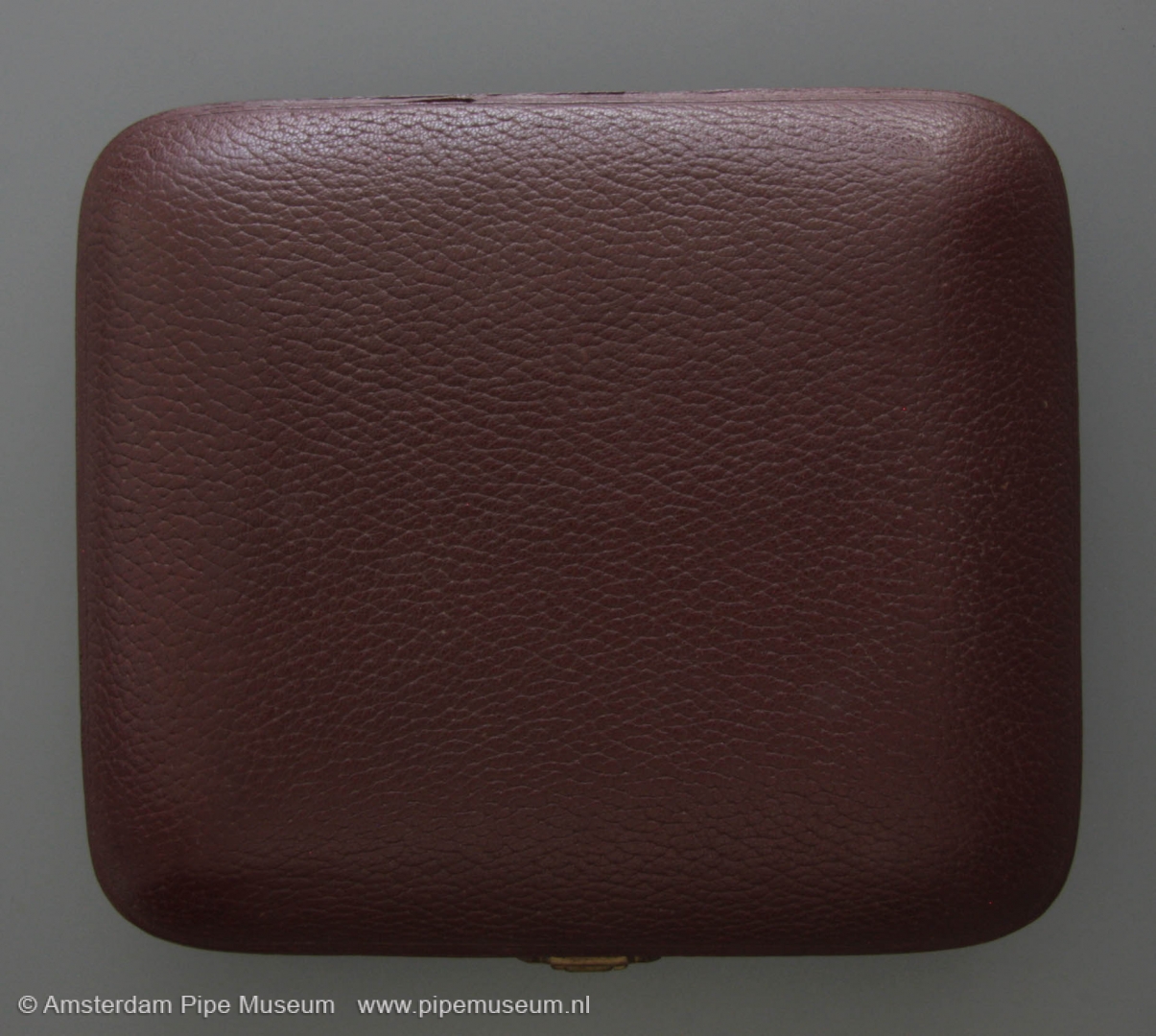
These are not the first Dunhill pipes in the Pijpenkabinet collection, of which the most unique is the pipe belonging to the late Prince Bernhard, which has a silver band engraved with the coat of arms of Lippe-Biesterfeld. This fine box with four pipes shows that smokers in the fifties bought their pipes in quantity – something quite different from current habits !
Amsterdam, Pijpenkabinet collections Pk 17.419
Tobacco pipe as a status symbol
The Pijpenkabinet studies not only the history of the Dutch clay tobacco pipe, but pipe smoking culture in world-wide scope. The collection was enriched with objects from all parts of the world, for instance with this Japanese tobacco pipe, a so-called ‘kiseru’. We already had several of these kiseru’s, ranging from simple and plain to the most exclusive with gold and an inserted diamond.
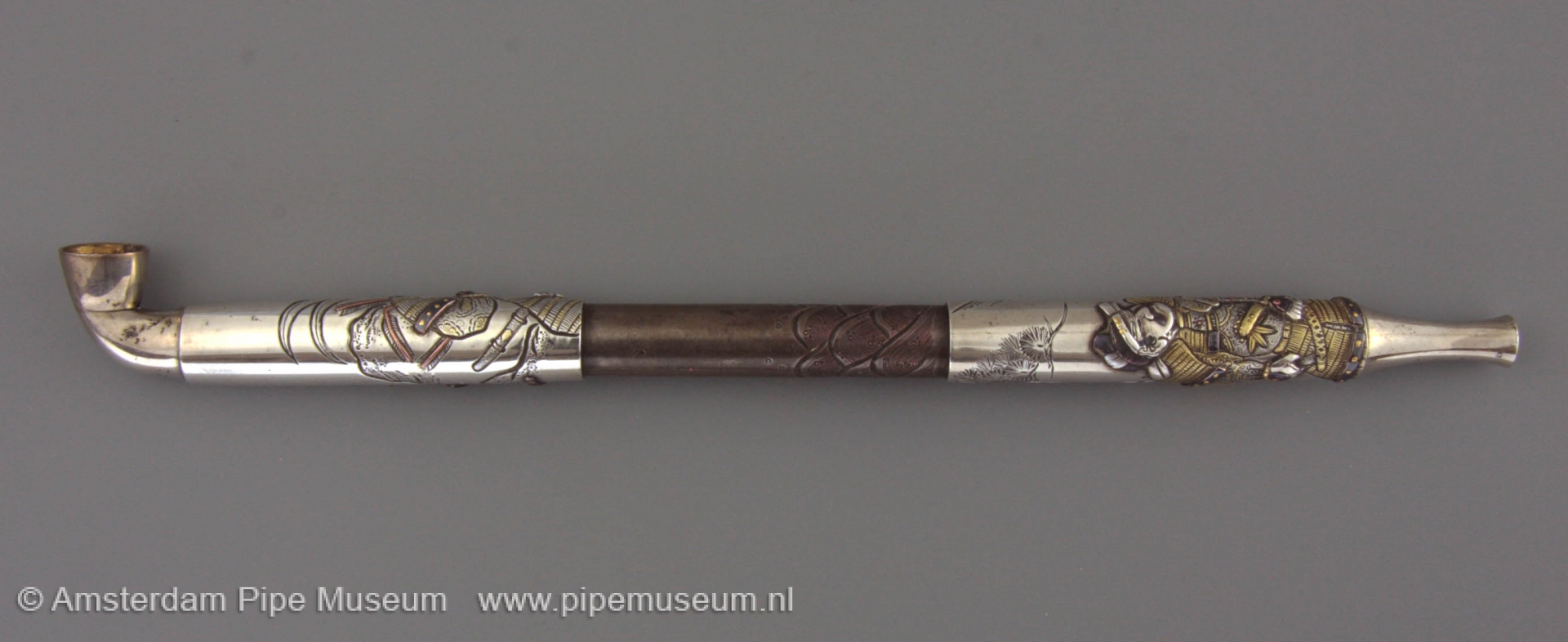
Special feature of this recent acquisition is its function as a show-pipe, to take to the opera or theatre to show-off one’s exclusive taste and wealth. The pipe itself has a traditional shape with a small metal bowl. The straight stem is not from bamboo as usual, but copper-engraved iron. Spectacular is the silverwork at the two ends. An embossed decoration of two warriors in historic harnesses encircles the pipe stem. Depicted at each end of the pipe, they are separated by the iron stem, which indicates the sea. This forms the traditional illustration of a 14th-15th century story about old-time heroes.
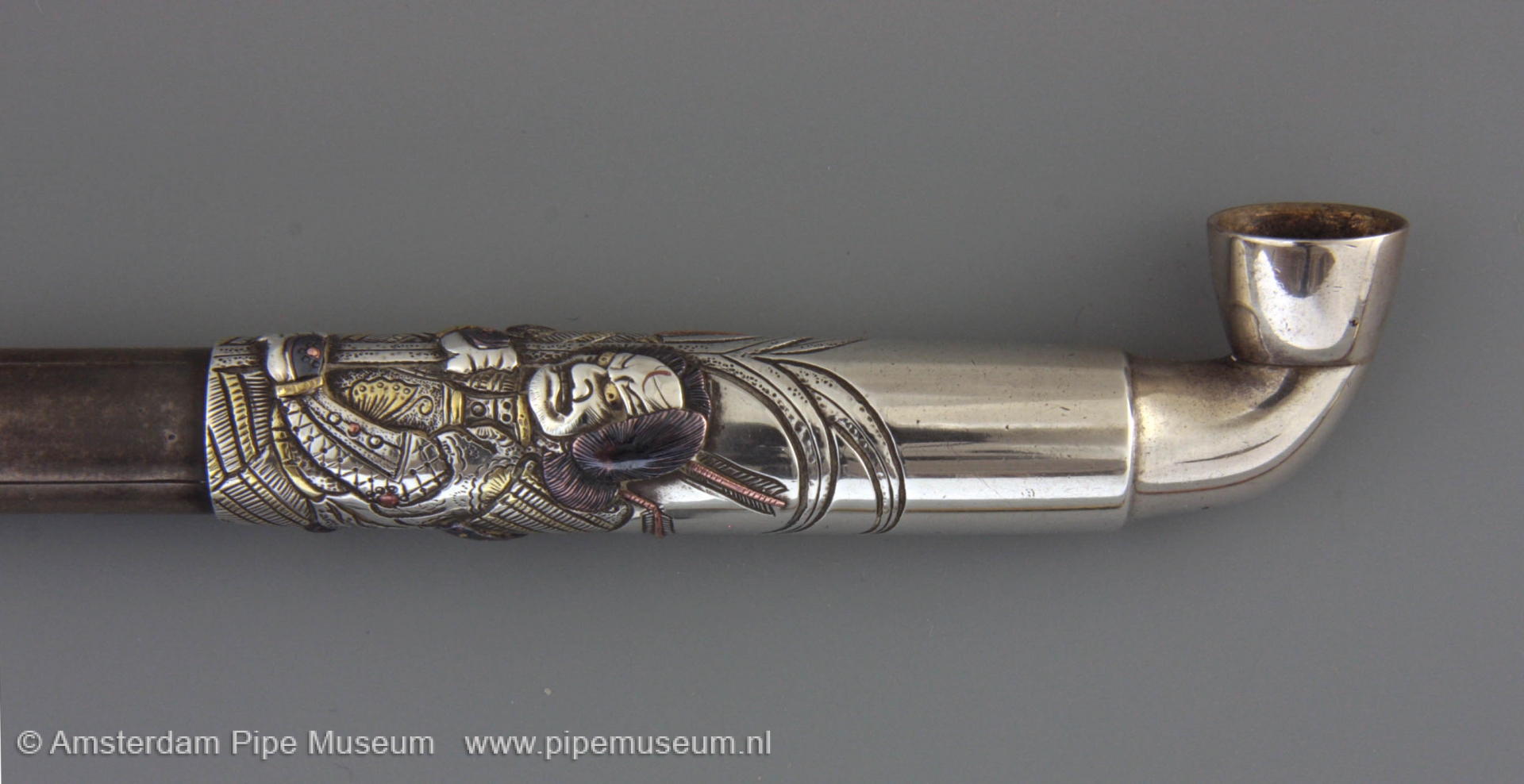
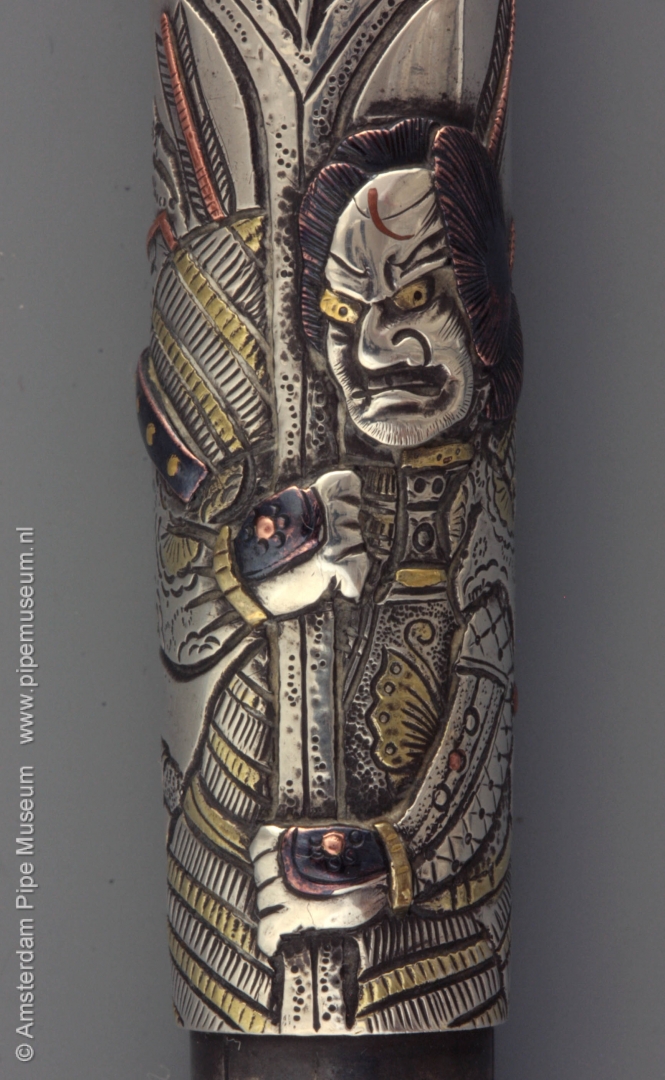
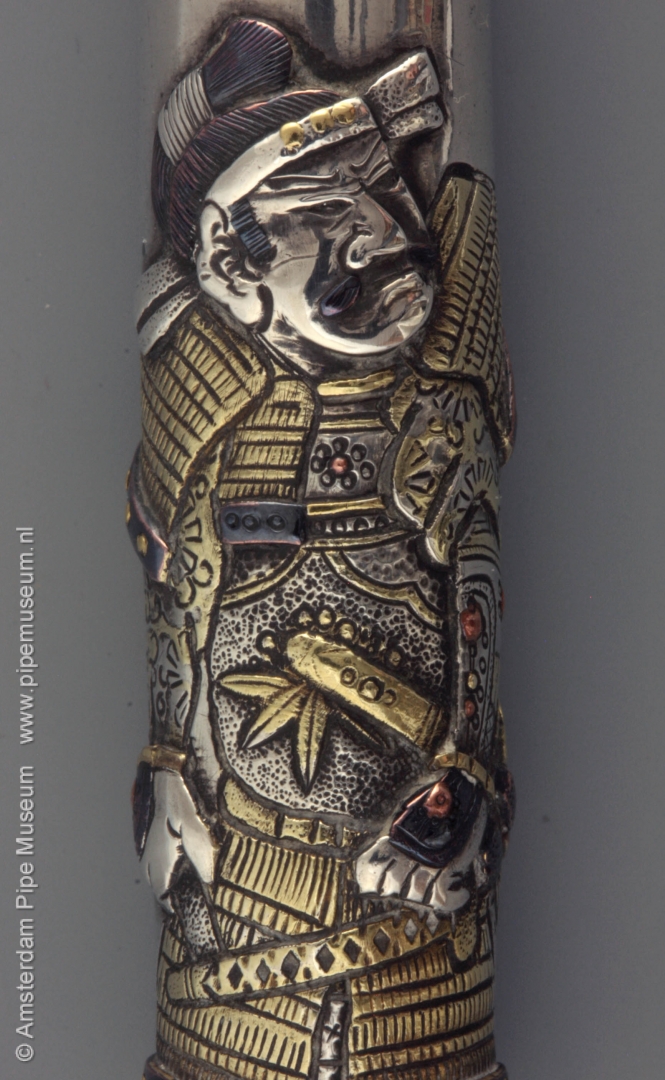
The pipe is part of a gala outfit of a traditional Japanese man from the end 19th century.
Amsterdam, Pijpenkabinet collections Pk 17.433
© D.H. Duco, Pijpenkabinet Foundation, Amsterdam - the Netherlands, 2005.